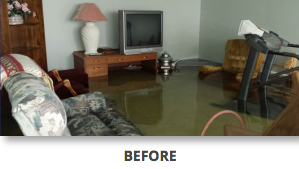Simple Tips to Detect Water Leakage at Home

A small water leak can be found using small techniques that will help you avoid unpleasant surprises in your home’s water meter. If you notice any moisture in your home’s hydraulic installation, that your bathroom is constantly leaking water, wet walls or your home’s water consumption has increased unreasonably, a water leak is likely. Here are a number of tips to help you learn how to detect a water leak at home. In Water Damage Restoration This is essential now.
Relief valves
When we find that the discharge valves take a long time to stop after actuation, we may be facing the most common cause of slow leakage, a defect in the discharge valve. In addition to improper installation, the valve has a rubber part that can damage or become hard enough to replace, and this can be done by replacing the repair.

Water Box Buoys
The often problematic item that fails to properly control the water tank filling and can overflow in extreme cases. The most common problems are too high-pressure water tank float, worn sealing rubber or other problems with the float itself. On several occasions, the idea is to change the water box float.
Old pipelines
Finding rust in pipes, hardly noticed in time to prevent damage, is another factor that favors the emergence of leaks, besides compromising water quality. The old pipes that present this problem most are those of galvanized iron, which rust over time, but also the copper ones, used mainly for hot water piping, which may have micro-holes causing seepage. on the floor, ceiling or wall.
Leaking pipe connections
In order to be able to make curves, branch subdivisions or sections of the water network that reaches our taps and showers that circulate through PVC, copper, iron, aluminum and others, connections are used as a glove, elbow, reduction, T, knee, etc. These connections may wear out, repair should be done by replacing the part.
Leaks in the roof or slab
Another major problem that affects many homeowners and tenants is water seepage into the slab or roof. Even if the roof is properly waterproofed with quality waterproofing, it usually ends up lacking maintenance or overtime when materials begin to deteriorate due to prolonged exposure to weather, even under normal use.
Water Leak in Bathroom
It is one of the most common leaks in the house. Make sure the bathroom faucets close properly. Check the general waterway log, sink, shower, and any other waterlog you may have. If it does not close properly, you will have to repair or change it. A good way to detect a water leak at home is to place dry clothes on the closed taps. If the cloth gets wet, you can be sure that this is the faucet that causes water problems.
Water leaks in the kitchen
Water leaks are often in the pipe that is inside the kitchen wall. To detect water loss, you have to go to the wall and hear if water runs in it. If your water consumption rises unjustifiably, turn off all taps and logs in the house. If the meter continues to move, contact an expert immediately as there may be an invisible leak in your home. If you notice discolored, moldy, or moldy areas in any area of your home where nothing has been spilled, observe the area for a few days. If they do not disappear, there may be a hidden water leak.



